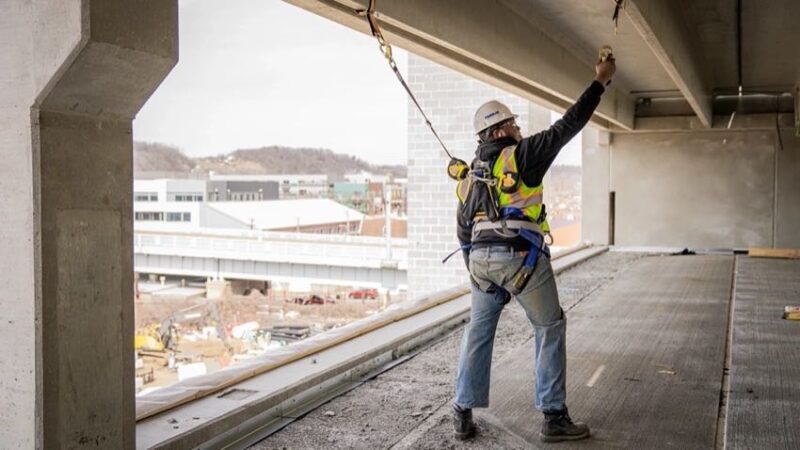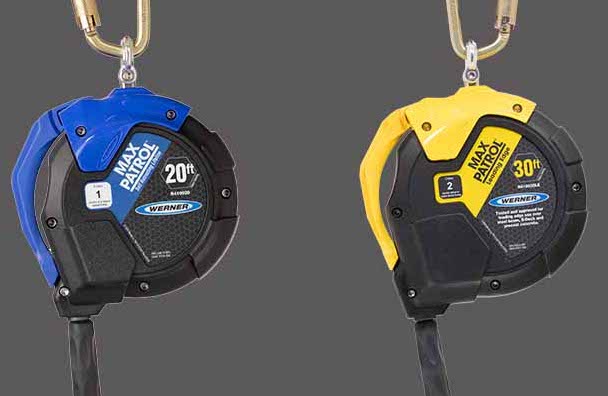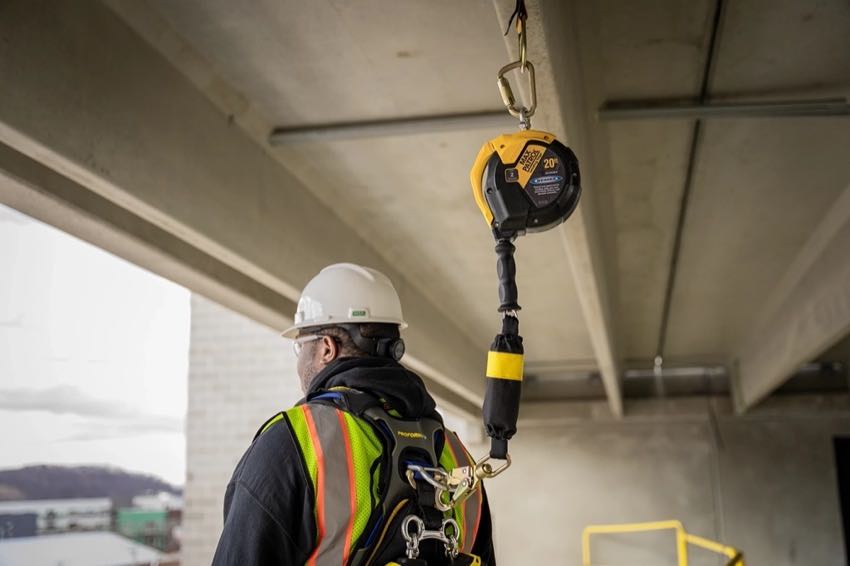There have been some changes in the realm of self-retracting lifeline fall arrest and rescue systems. In July 2021, The American National Standards Institute (ANSI) updated its Z359.14-2021 Fall Protection code to include new standards and requirements for fall protection systems.
Since the last ANSI Z359.14 code changes were made in 2014, these new updates are eight years in the making. This means that more industries have the opportunity to update their safety regulations to include self-retracting devices that meet or exceed the code.
While we are no experts in the highly technical field of fall protection, we know people who are. We reached out to Mike Cameron, the Technical Service Manager for Fall Protection at Werner with some questions about the most recent changes. We also explored how Werner is introducing their own updated products to meet these new standards.
What Common Scenarios Require a Self-Retracting Lifeline?

Mike told us that there are countless applications for self-retracting lifelines. These devices have a wide range of versatility and can be used in hundreds, if not thousands, of applications.
Some common scenarios where you’re likely to find workers using self-retracting devices include construction, bridgework, steel production, transportation, utilities, manufacturing, or most any application that requires at-height tasks. OSHA generally requires fall protection to be provided at elevations of six feet or more in the construction industry.
ANSI Z359.14-2021 Self-Retracting Lifeline Class Testing Changes
Testing of devices in the updated ANSI Z359.14-2021 standard changed; the test weight increased from 282 pounds to 310 pounds. The static test load also increased to 3,600 pounds from 3,000 pounds, with the new standard requiring devices to hold that weight for one minute while fully extended.
Here’s a breakdown of each class, 2014 vs. 2021, to show you how the data for testing has changed.
| Class A (2014) | Class B (2014) | Class 1 (2021) | Class 2 (2021) |
|---|---|---|---|
| Tested Overhead w/ 282 lb weight | Tested overhead w/ 282 lb weight | Tested overhead w/ 310 lb weight | Tested foot level w/ 310 lb weight |
| Must arrest fall within 24 inches | Must arrest fall within 54 inches | Must arrest fall within 42 inches | Arrest distance on label and instructions |
| Average force < 1,350 lbs | Average force < 900 lbs | Average force < 1,350 lbs | Average force <1,350 lbs |
| Static test weight: 3,000 lbs | Static test weight: 3,000 lbs | Static test weight: 3,600 lbs | Static test weight: 3,600 lbs |
Are There Any Major Self-Retracting Lifeline Regulations That Aren’t Changing?
Mike told us that there are several changes to product labels, user instructions, and testing listed above. He cautioned us that although changes were made, ANSI does not require equipment meeting a previous standard, like products marked Class A or B, to be removed from service when a standard is released, revised, or re-affirmed. Werner supports organizations that want to update equipment to the most recent standard, however that is an individual organization’s decision and not one that is mandated by any current standard or regulatory requirements.
He also clarified that the old classes do not correlate with the new classes in any way. For example, Class A does NOT transfer over to Class 1, the two designations are separate from each other. To make the selection of an SRL simpler, the Classes differentiate SRLs by anchor location. Class 1 SRLs are applied to applications where the anchor is higher than the user’s back D-ring and Class 2 SRLs are used for applications anchored below the back D-ring.
ANSI Z359.14-2021 Self-Retracting Lifeline Implementation
There has been some confusion about when this new ANSI Z359.14-2021 Fall Protection Standard goes into effect. The standard was formally published, released, and available in June 2021 with an effective date of August 2022. The effective date inside of a standard is a target date for manufacturers to make changes to the products (testing, labeling, manuals, etc.) to meet the new standard. Due to global supply, labor, and shipping issues, the new standard was republished, extending the effective date to February 2023.
What Changes is Werner Making to Self-Retracing Lifeline Products to Meet/Exceed The Updated Standards?

Werner was the first to market with the entire SRL lineup meeting the updated ANSI Z359.14 standard. They made it easier to differentiate between its Class 1 products and Class 2 products by color coding the self-retracting lifelines. Class 1 overhead-only self-retracting lifelines are blue, and Class 2 leading edge self-retracting lifelines are yellow. The labels also feature added durability to aid inspection and to ensure clear and correct product usage.
Innovation comes standard with all Werner fall protection products. All Class 2 self-retracting lifelines are tested and approved for leading edge use over steel beams, B-deck, and precast concrete. The clearance requirements are clearly marked on each device, too.
When using Werner fall protection equipment, approved edge substrates, acceptable uses, clearance requirements, and inspection details are marked on the device’s label and inside the user instructions.
You can find out more about the updated ANSI Z359.14-2021 Fall Protection update here. As you’re getting ready to upgrade your gear, be sure to check out Werner’s fall protection products here.



